Dogs are indeed humans’ best friends. Whether they spend their days enriching our lives with their companionship or function as invaluable help for their families, like Honey the Service Dog does, all dog owners want what’s best for their four-legged friend.
In an attempt to improve and enrich their dogs’ lives, more and more dog owners are feeding their dogs raw meat, either as the main component of their dog diets or as a lovely snack. But are you aware of some risks associated with feeding raw meat and a raw meat diet?
- Raw meat diets lack balance and pose bacterial risks.
- Raw meat may contain pathogens like Salmonella and E. coli.
- Vets don't recommend a primary raw meat diet for dogs.
- High-quality kibble remains a nutritionally sound option.
Come along as we uncover the truth about the popular new trend of raw food for dogs!
The information provided herein is for informational purposes only. Please refer to our disclaimer for more details..
- Can Dogs Eat Raw Meat as A Snack?
- Feeding a Raw Food Diet
- Risks Associated With Feeding Your Dog Raw Meat
- Are There No Benefits Of a Raw Diet?
- What Is the Veterinary Opinion On a Raw Food Diet For Dogs?
- What To Do If You Want To Feed Raw Meat
- What About Kibble?
- Conclusion: Is Raw Foods Good for Dogs?
Can Dogs Eat Raw Meat as A Snack?
Yes, dogs can eat raw meat. But first, it is essential to distinguish between the idea of feeding your dog raw meat as a delicious snack and when you feed your dog a raw meat diet.
Offering raw meat as an occasional dog snack can be a safe and nutritious treat when handled responsibly. Many dog owners incorporate raw meat snacks into their pets’ diets to provide a natural and enjoyable eating experience.
Lean and denatured meats such as chicken, turkey, and beef are generally safe options. However, meat rich in fats should be avoided to minimize the risk of your dog developing a dangerous condition called pancreatitis.
However, before feeding your dog a snack, precautions must be taken to ensure the meat is fresh, high-quality, and free from harmful contaminants.
Additionally, raw bones as snacks should be appropriate for consumption, as some bones can pose choking hazards or cause digestive issues. Pork bones, in particular, are prone to breaking and can cause severe havoc within your dog’s intestines, so it is always advisable to avoid these.
However, remember, if your dog is not used to having raw meat as a snack, the protein bomb may be way too much for your little puppy and can cause severe gastrointestinal upsets like diarrhea and vomiting.
Feeding a Raw Food Diet
Feeding a primarily raw meat diet has gained popularity worldwide in recent years.
When owners pick up a bag of dog food in the shop, a long list of ingredients is on the back. Even trained professionals can find it difficult to determine what ingredients make up the food, not to mention whether it is good for your dog!
Studies have shown that one of the main reasons dog owners give when asked why they want to feed their dogs a raw meat diet is the lack of transparency regarding the ingredients in commercial dog food.
Many also wish to feed their dogs a more “natural” and perceived “healthier” diet. However, feeding a dog raw meat is rarely the best option for our domesticated companions.
From Wolf to Dog – A History of Diet for Dogs
Let’s dive into a bit of history. As most will know, dogs evolved from wolves. However, dogs became domesticated a very long time ago. Exact guesses vary, but most estimate that domestication happened more than 10,000 years ago.
One of the differences we know of is the different requirements when it comes to diet. Dogs, for example, are more capable of digesting starch than wolves. This suggests that wolves and dogs need to be fed significantly different diets. Even seemingly wild dogs should have some type of starch.
So, Should You Feed Your Dog a Raw Meat Diet?
A raw food diet may seemingly align with their natural physiology and reflect the ancestral canine diet, primarily consisting of raw meat, bones, and other prey items.
However, the reality is that our modern furry friends have significantly altered canine physiology, and some potential risks are associated with feeding a primarily raw meat diet.
Risks Associated With Feeding Your Dog Raw Meat
Bacteria and Parasites in Raw Dog Food
One of the main concerns associated with feeding a raw meat diet is infections, as current research suggests that it increases the risk of bacterial infections substantially.
Raw meat can harbor pathogens like Salmonella and E. coli, posing a threat to the dog and its human companions, especially those with compromised immune systems. Even meat bought for humans may carry pathogens, as meat meant for human consumption is supposed to be thoroughly heated before eating.
Salmonella and E. coli can cause severe diseases in dogs. Symptoms may include diarrhea, vomiting, lethargy, and, in severe cases, kidney failure.
But the bacteria isn’t only a problem for the dog itself. Dogs fed on a raw diet can also excrete large quantities of Salmonella, even without being sick. Thereby, they pose a risk to themselves and other animals and humans in close contact. This shedding of bacteria can occur even in seemingly healthy dogs, emphasizing the potential dangers of raw meat diets.
The zoonotic nature of these bacteria means they can be transmitted between dogs and humans, emphasizing the importance of practicing stringent hygiene measures when handling raw meat and interacting with pets.
While some argue that dogs have evolved to handle such bacteria, the risks of infection, especially in immunocompromised individuals, remain a significant concern.
Raw meat diets for dogs also pose a risk of parasitic infections. Parasites like Toxoplasma gondii and Trichinella spiralis can be present in raw meat, leading to health issues in dogs. These parasites can cause symptoms such as gastrointestinal problems, muscle pain, and even severe organ damage.
A Nutritional Balanced Diet For Your Dog
Another recurring concern for many professionals regarding feeding a raw meat diet is the need for balanced nutrition. A balanced nutrition is essential for a dog’s well-being and should encompass proteins, fats, carbohydrates, vitamins, and minerals.
While a raw meat diet may offer certain nutrients, achieving a balanced nutritional profile is challenging, especially if it is a homemade raw meat diet.
Essential elements like calcium and phosphorus may be deficient or imbalanced, potentially leading to skeletal issues.
There is also a high risk of a dog receiving a significantly higher amount of fats than needed, leading to a high risk of pancreatitis, as well as many more calories than what is needed, leading to an increased risk of obesity.
Although they may look a little bland, commercial dog food undergoes rigorous testing to ensure a comprehensive and balanced nutritional composition, providing a safer and more reliable option for most dogs. Without this meticulous formulation, raw diets pose risks of nutritional imbalances, potentially resulting in health issues.
Veterinary guidance, proper hygiene, and quality sourcing of raw ingredients can mitigate some of the risks associated with feeding a raw diet, but pet owners must be aware of the potential hazards associated with feeding dogs raw meat.
Are There No Benefits Of a Raw Diet?
Image credits: pearl_sango_rawfoodlife
Currently, no studies have scientifically demonstrated nutritional or health benefits of raw meat diets for dogs.
Some anecdotal evidence suggests that dogs fed a primarily raw meat diet may benefit from increased dental hygiene, a shinier coat, and smaller stool portions. However, there are no data to back these theories.
One significant benefit, however, with feeding a raw diet may be that owners know exactly what their dog is eating and, therefore, may be able to limit exposure to some allergens, which can benefit dogs known to suffer from allergies.
It cannot be overstated, either, that most dogs are likely to prefer a raw meat diet, as it caters exactly to their taste buds.
What Is the Veterinary Opinion On a Raw Food Diet For Dogs?
Although most veterinarians worldwide recognize the trend of feeding dogs a raw diet, there are no recommendations for feeding dogs diets based primarily on raw meat. The common opinion is that the risks far outweigh any real or perceived benefits associated with it.
Large organizations such as the American Animal Hospital Association (AMHA) and the American Veterinary Medical Association officially recommend against feeding a raw meat diet.
What To Do If You Want To Feed Raw Meat
Embarking on a raw meat diet for your dog requires careful consideration and planning. Here is some good advice to get you started.
Veterinary Consultation
Initiate the process of transitioning to a raw meat diet by consulting your veterinarian. They can provide insights into your dog’s specific dietary needs and help ensure the raw diet is well-balanced with essential nutrients. A tailored approach is crucial as individual dogs may have unique nutritional requirements.
Gradual Transition To Raw Meals
Transitioning your dog to a raw meat diet should be a gradual process. Otherwise, it is likely to cause significant stomach upsets when the stomach attempts to digest raw meat.
Start by incorporating small amounts of raw food alongside their regular diet, slowly increasing the ratio over several days or weeks. This gradual adjustment helps prevent digestive upset.
Common Challenges When Feeding Dogs Raw Meat
Some dogs may face challenges during the transition, such as gastrointestinal upset or dietary sensitivities. Monitor your dog’s behaviour, stool consistency, and overall well-being. If issues arise, consult your veterinarian for guidance on adjusting the diet.
Safety When You Prepare Meat
Practice safe meat handling to minimize the risk of bacterial contamination. Use separate cutting boards and utensils for your dog’s food, and ensure all surfaces are thoroughly cleaned after preparation. Wash your hands diligently to prevent potential cross-contamination.
Preparing a Raw Food Diet For Your Dog at Home
Homemade raw meals can be prepared using a variety of meats, organs, and bones. For balanced nutrition, include a diverse range of protein sources. Vegetables and supplements may also be incorporated based on your vet’s recommendations. Remember that a balanced diet is essential for your dog’s overall health.
Storage and Hygiene
Proper storage is crucial to maintain the freshness and safety of raw dog food. Store raw meat in a dedicated freezer, separate from human food. Follow hygiene practices to safeguard both your pet and family members. Regularly clean food bowls, storage containers, and feeding areas.
Transitioning to a raw meat diet requires diligence, patience, and veterinary guidance. By taking a gradual approach and prioritizing hygiene and nutritional balance, you can provide your dog with a tasty diet.
What About Kibble?
If you feel like raw feeding may not be right for your dog, of course, perfectly good kibble and pet food is still available – and you can always spoil your best friend with a little meat snack from time to time!
Dog kibble is a convenient and nutritionally complete option and offers several benefits for pet owners. It provides a balanced and easily portioned diet, and there are many to choose from, making it easier to pick one that suits your dog’s unique needs.
It is also a practical choice for storage and feeding, offering long shelf life without refrigeration.
Choosing the proper kibble for your dog involves considering factors like age, size, and specific dietary needs. Opt for high-quality brands that list meat as the primary ingredient and avoid fillers or artificial additives. Some dogs may require specialized formulas for health conditions or allergies.
Veterinary guidance is invaluable in selecting the most suitable kibble for your dog. A veterinarian can assess your dog’s health, weight, and dietary requirements and recommend a kibble that aligns with its unique needs.
Transitioning to a new kibble should be gradual, mixing it with the existing food to avoid digestive upset. Monitor your dog’s response, noting changes in coat quality, energy levels, and overall well-being.
In summary, while raw diets have gained popularity, high-quality kibble remains a practical and nutritionally sound option for many pet owners.
Conclusion: Is Raw Foods Good for Dogs?
While feeding dogs raw meat has gained popularity, pet owners must know the associated risks. Offering raw meat as an occasional snack can be safe when handled responsibly, with lean meats like chicken, turkey, and beef being suitable options. However, feeding a primarily raw meat diet poses significant challenges, including the risk of bacterial and parasitic infections and imbalanced nutrients.
Veterinary guidance, gradual transition, addressing common challenges, and practicing safe meat handling are essential for those considering a raw meat diet for their dogs. Alternatively, high-quality kibble, recommended by veterinarians, remains a practical and nutritionally sound choice, offering convenience and balanced nutrition for many pet owners.
In conclusion, while raw diets may cater to dogs’ taste preferences, careful consideration and responsible choices ensure the well-being of our furry companion.
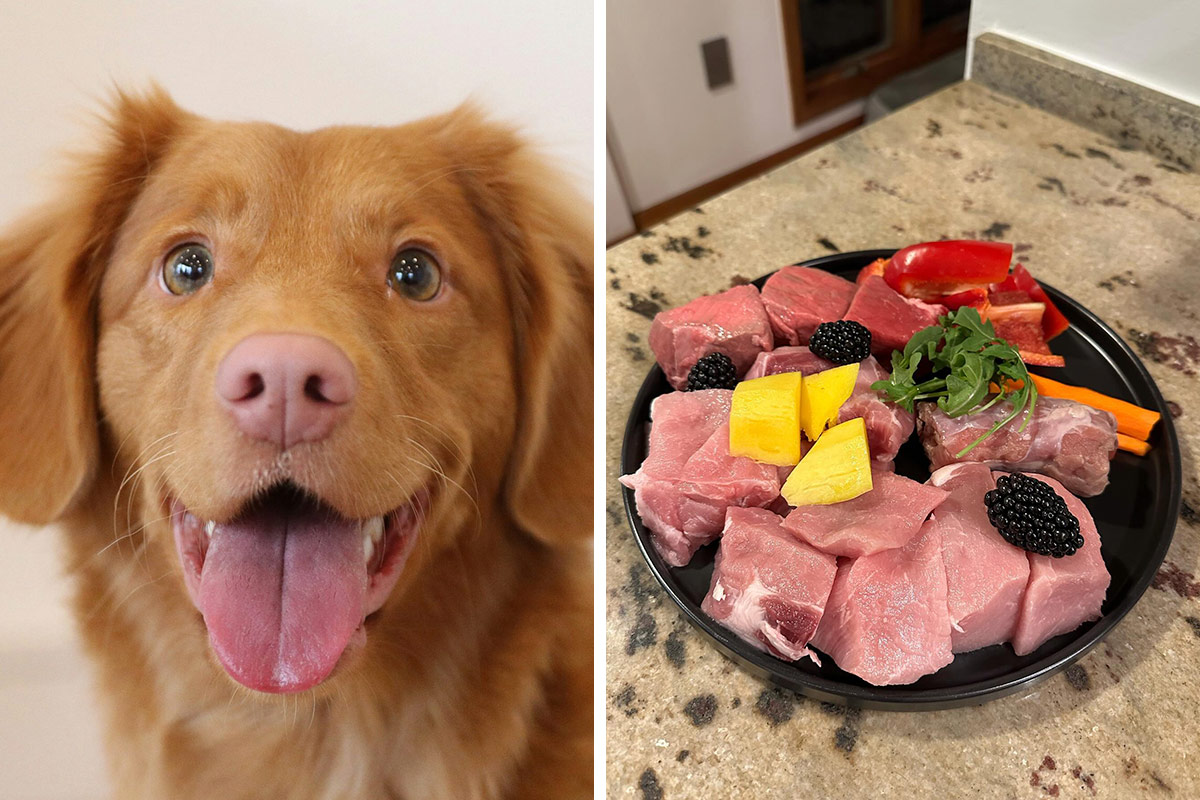
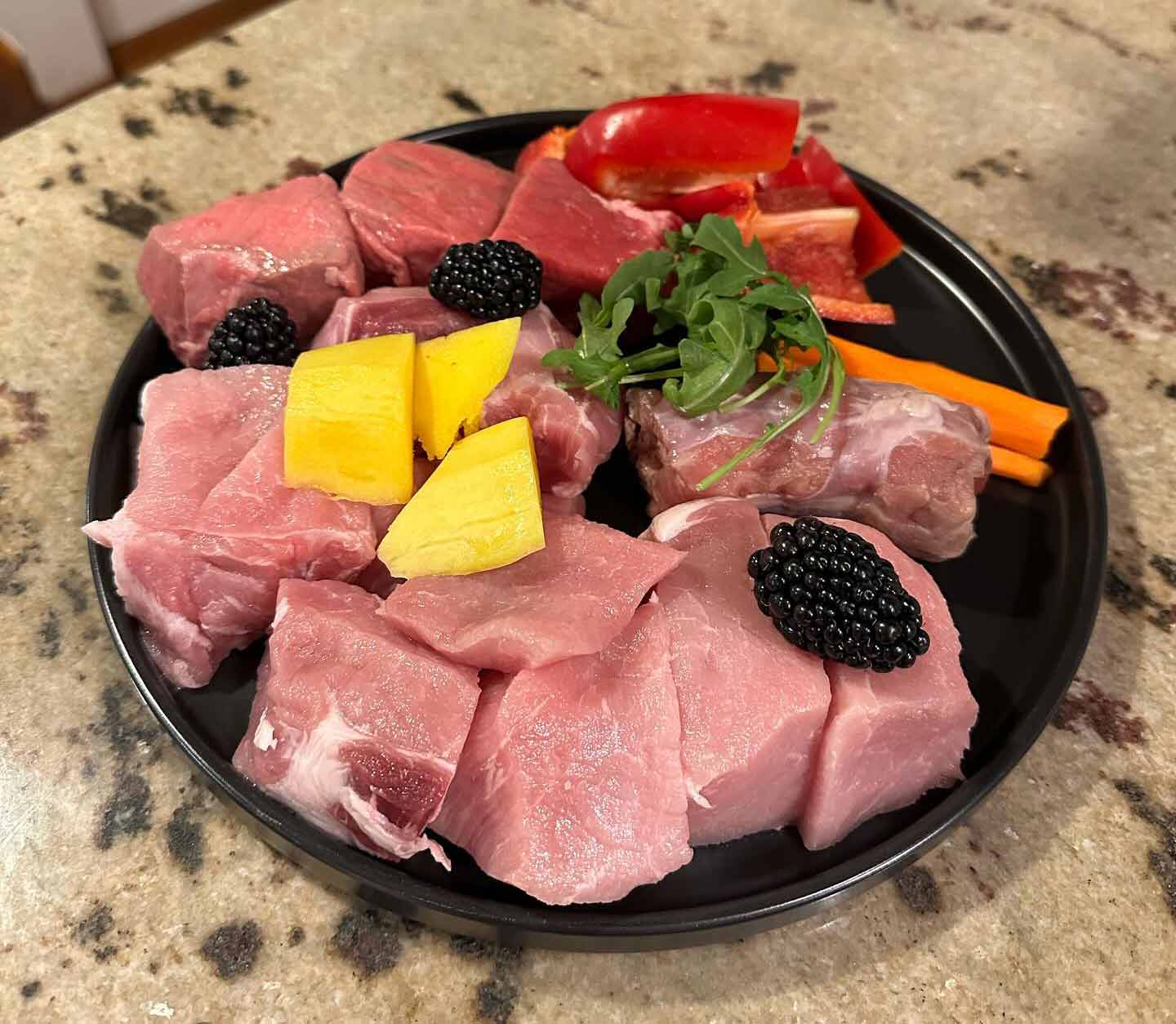 Image credits:
Image credits: 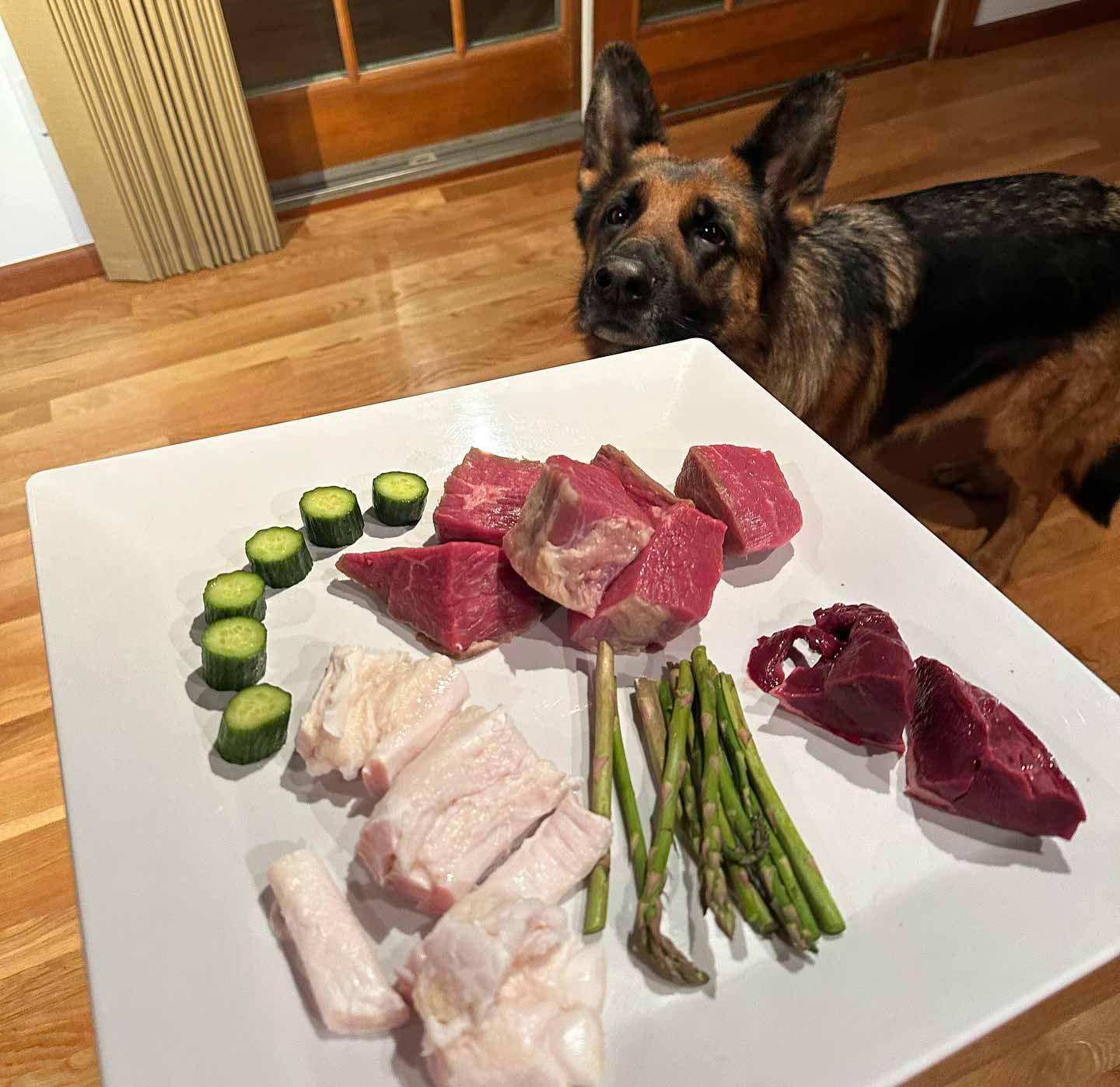 Image credits:
Image credits: 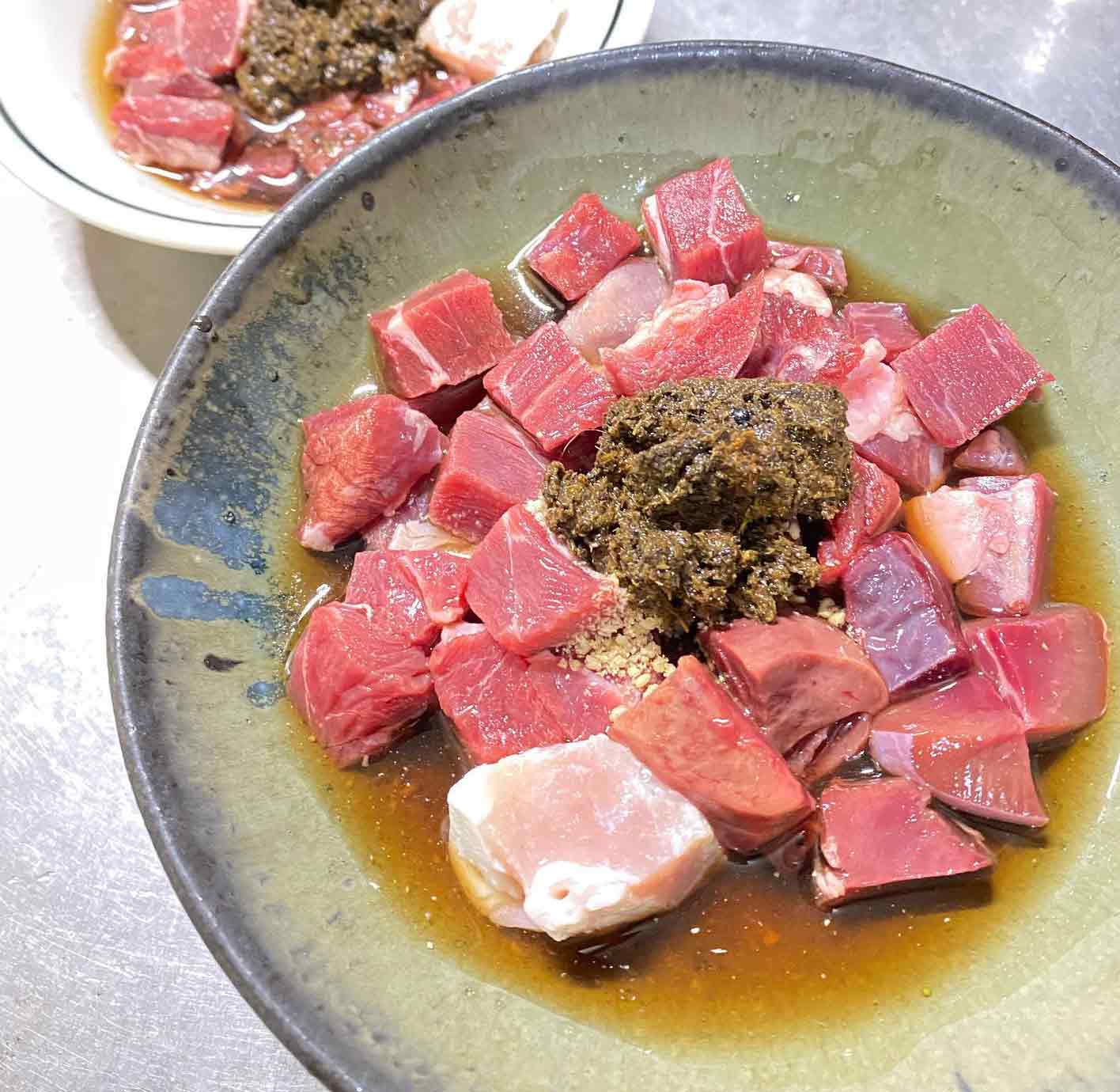 Image credits:
Image credits: 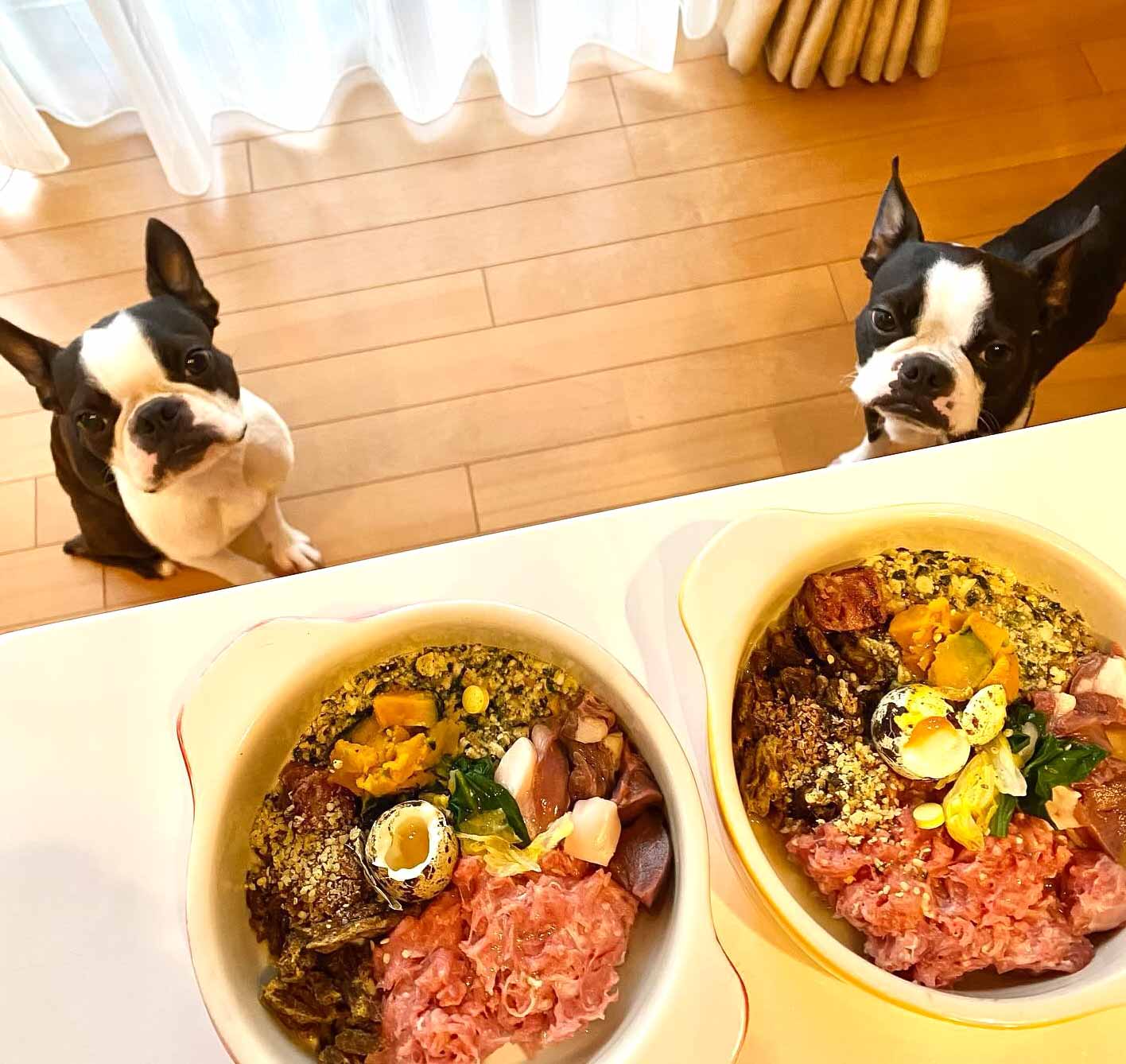



-3
0